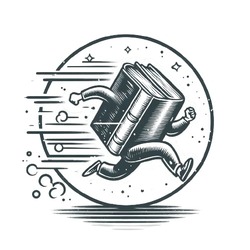One Sentence Summary:
Set in the mythical world of Middle-earth, J. R. R. Tolkien’s ‘The Hobbit’ and ‘The Lord of the Rings’ follow the adventures of a hobbit named Bilbo Baggins and a fellowship of creatures in their quest to defeat the Dark Lord Sauron.
Book Genre:
Fantasy, Adventure
Main Topic of the Book:
The main topic of the book is the struggle between good and evil, as well as the journey of self-discovery and bravery. It also explores themes of friendship, loyalty, and the consequences of greed and power.
Key Ideas:
- Good vs. Evil: The central conflict in the book is the battle between the forces of good, represented by the fellowship, and the Dark Lord Sauron and his army of orcs and other creatures.
- Hero’s Journey: The books follow the classic hero’s journey narrative, as the hobbit Bilbo and later, the hobbit Frodo, embarks on a perilous quest to save Middle-earth.
- Friendship and Loyalty: The importance of friendship and loyalty is emphasized throughout the books, as the fellowship relies on each other’s strengths and supports each other through difficult challenges.
- Moral Lessons: Tolkien intertwines moral lessons into the story, emphasizing the consequences of greed and the corrupting power of the Ring.
Main Parts of the Book and a Short Summary:
- The Hobbit:
The first book in the series follows the adventure of a young hobbit named Bilbo Baggins, who is recruited by the wizard Gandalf to join a quest to reclaim the Lonely Mountain and its treasure from the greedy dragon Smaug. Along the way, he encounters trolls, goblins, elves, and the mysterious creature Gollum, and finds a magical ring that will play a crucial role in the rest of the series. - The Fellowship of the Ring:
The first part of ‘The Lord of the Rings’ trilogy begins with the discovery that the ring that Bilbo found is actually the One Ring, a powerful weapon that can enslave the whole of Middle-earth. Frodo, Bilbo’s nephew, is tasked with destroying the Ring in the fires of Mount Doom. With the help of Gandalf and a fellowship of creatures including hobbits, elves, dwarves, and men, Frodo sets off on a dangerous journey to Mount Doom, while facing threats from the Dark Lord Sauron and his servants. - The Two Towers:
In the second part of the trilogy, the fellowship is split into three groups as they continue on their journey to destroy the ring. Meanwhile, the forces of good face challenges and obstacles, and tensions rise within the group as they face the temptation of the Ring and its corrupting effects. - The Return of the King:
In the final part of the trilogy, the fate of Middle-earth hangs in the balance as the fellowship makes their final attempt to destroy the Ring. The final battle between good and evil takes place, and sacrifices are made as the characters face their own inner demons and rise to challenges in an epic conclusion.
Key Takeaways:
- Good will always triumph over evil in the end.
- Friendship and loyalty are important virtues in overcoming challenges.
- Power and greed can corrupt and destroy even the strongest of individuals.
- The importance of self-discovery and bravery in one’s journey towards finding their true purpose.
Author’s Background and Qualifications:
J. R. R. Tolkien was an English writer, poet, and professor who dedicated his life to writing epic fantasy novels. He was a professor of Anglo-Saxon (Old English) and Middle English language and literature at the University of Leeds and later at Oxford University, where he wrote and published his works. Tolkien also served in World War I, which heavily influenced his writing. He was a renowned scholar in medieval literature and language, which heavily influenced the rich world-building and languages in his books.
Target Audience:
‘The Hobbit’ and ‘The Lord of the Rings’ are suitable for readers of all ages, as they offer a timeless adventure story with literary depth. However, due to some mature themes and violence, the books may be more suitable for older readers.
Publisher and First Publication Date:
‘The Hobbit’ was first published by George Allen & Unwin in 1937, while ‘The Lord of the Rings’ was first published in three volumes by the same publisher in 1954 and 1955. It has since been republished by various publishers, including HarperCollins and Houghton Mifflin.

